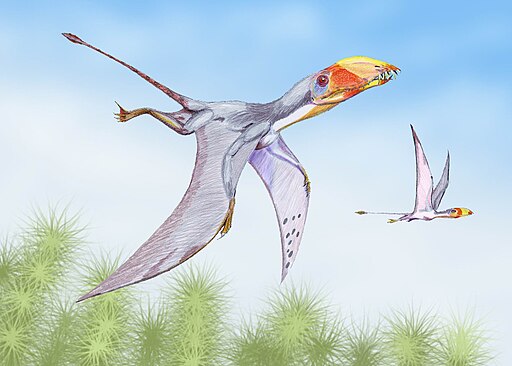The Two-Toothed Pterosaur
Dimorphodon was an early pterosaur, a type of flying reptile, that lived during the Early Jurassic period, around 195 to 190 million years ago.

| Meaning | Two-formed tooth [Di–morph–odon] |
| Pronunciation | dy-MOR-foh-don |
| When: | Early Jurassic (about 200–190 million years ago) |
| Where: | Europe (United Kingdom) |
| What: | Pterosaur (early flying reptile) |
| Weight: | Estimated around 1–2 kg (2.2–4.4 pounds) |
| Length: | Approximately 1.4 meters (4.6 feet) wingspan |
| Diet: | Insectivorous and piscivorous (ate insects and small fish) |
| Discovered: | First described by Richard Owen in 1859 |
Its name means “two-form tooth,” which refers to the two distinct types of teeth found in its jaws. This unique feature makes Dimorphodon an interesting study in the diversity of prehistoric flying reptiles.
Dimorphodon had a wingspan of about 1.5 meters (5 feet), and its body was relatively small and lightweight, weighing around 1 kilogram (2 pounds).
It had a large head with a short, robust neck and long, slender wings. Its wings were supported by an elongated fourth finger, a characteristic feature of pterosaurs.
The most striking feature of Dimorphodon was its teeth. It had large, pointed teeth at the front of its jaws, which were likely used for catching and holding onto prey, such as fish and small animals. Behind these were smaller, more numerous teeth that could have helped in processing food. This combination of teeth suggests that Dimorphodon had a varied diet and was an opportunistic feeder.
Dimorphodon also had strong, grasping claws on its hands and feet, which may have been useful for climbing trees or rocky surfaces. This ability to climb could have helped Dimorphodon take off from elevated positions, making it easier to launch into flight.
